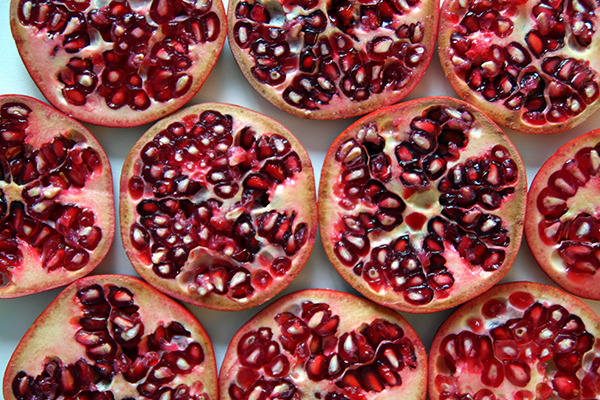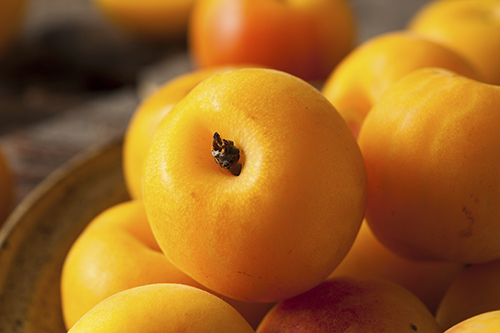Pomegranates. As part of fruits and veggies month, Thrive! is featuring a few favorite fruits and veggies. A whopping 90 percent of adults and children don’t get enough fruits and veggies. So, add this one to your shopping list this week!
HISTORY
The pomegranate can be traced far back into time. It is named in numerous ancient texts, such as the Quran and the Torah, and the pomegranate originated in Persia (Iran today). The pomegranate continues to sweep across the continent and could even be found along the Silk Road, one of the richest trading routes in history.
Pomegranates were extremely valuable in Ancient Egypt. They were along a pharaoh’s side in life and death, as they painted pomegranates on the walls to symbolize life after death and buried pomegranates with them. The pomegranate can be found everywhere across all cultures, anywhere from Ancient Rome to Buddhism. The pomegranate has shaped myths and religious stories and continues to be a prominent part of today’s society.
FUN FACTS
- Granada, Spain is named after the Spanish word for pomegranate
- Pomegranates are one of the fruits believed to be in the gardens of paradise in the Muslim religion
- There is a Pomegranate Festival in Goychay, Azerbaijan
- Its nickname is “The Jewel of Winter” because of the season it grows in
SEASON
In the Northern Hemisphere, Pomegranates are in season from September to February. However, in the Southern Hemisphere, they are in season from March to May. Pomegranates are grown around the world. California is the main producer for the United States, but they are also successfully grown in Iran, Israel, India and many more countries.
ATTRIBUTES
Pomegranates are grown in trees. The trees usually have 3-5 trunks, and they can withstand hot and dry weather or winter temperatures. They can reach up to 12 feet high, and from the tree, you will see the bright red pomegranates growing in bundles of three to four. The pomegranate can taste very sweet or more tart, depending on the kind you have. Many mistake pomegranates for apples, but pomegranates have a crown rather than a stem.
WHAT YOU SHOULD LOOK FOR
The heavier the pomegranate, the juicier it will be. The juiciest pomegranates will be heavy for their size. You want to look for a deep color, but the color of the rind does not matter too much. The rind can vary in color from red to reddish-brown without affecting the taste of the fruit.
NUTRITION
Pomegranates have an endless amount of health benefits. They can improve your heart health and prevent strokes. They can increase fertility in women. They can lower your cholesterol and blood pressure. They can even decrease your risk of lung or prostate cancer. It has shown to help people with Alzheimer’s and reduce symptoms of depression. There are a plethora of health benefits from eating and drinking pomegranates that could help many people’s daily lives.
STORAGE
You should refrigerate this fruit. They should last up to three to four weeks if they are kept refrigerated. You can also freeze the seeds if you want to preserve them longer, but they should be frozen in a sealed bag.
HOW TO ENJOY
 Pomegranates taste wonderful, but they are a little difficult to prepare. The hard outer shell is hard to break through, and then you have to pry apart the pith to get to the tasty part. Although difficult, it is rewarding for both the taste and the health benefits. There are some wonderful recipes. Check out a few at All Recipes. Enjoy!
Pomegranates taste wonderful, but they are a little difficult to prepare. The hard outer shell is hard to break through, and then you have to pry apart the pith to get to the tasty part. Although difficult, it is rewarding for both the taste and the health benefits. There are some wonderful recipes. Check out a few at All Recipes. Enjoy!



